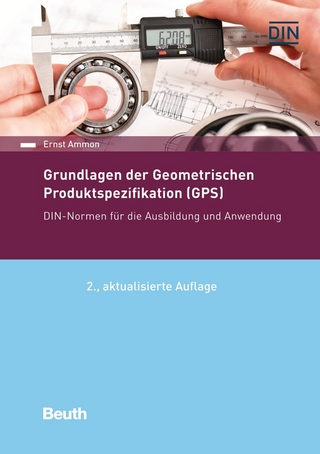
SolidWorks 2010 Bible
John Wiley & Sons Ltd (Verlag)
978-0-470-55481-4 (ISBN)
- Titel ist leider vergriffen;
keine Neuauflage - Artikel merken
This in–depth guide goes into extensive detail, not just on "how" the software works, but in many cases "why" it works the way it does.
The only guide you need to learn the leading 3D solid modeler program, SolidWorks.
This in–depth guide goes into extensive detail, not just on "how" the software works, but in many cases "why" it works the way it does.
SolidWorks is a powerful 3D solid modeling system that is popular with CAD users everywhere, but to become really proficient at the more involved functionality in SolidWorks one really needs specialized training or a comprehensive book like the SolidWorks Bible
Thoroughly covers SolidWork features using real–world examples
Author, Matt Lombard, is well known and well respected in the SolidWorks community and host a popular SolidWorks blog called dezignstuff
Get the guidance you need to efficiently learn and master SolidWorks.
Note: CD–ROM/DVD and other supplementary materials are not included as part of eBook file.
Matt Lombard is an independent mechanical design consultant. Because of the popularity of his SolidWorks blog dezignstuff and his sessions at SolidWorks World, Matt has built a reputation as the go–to resource for everything SolidWorks.
Acknowledgments.
Part I: SolidWorks Basics.
Chapter 1: Introducing SolidWorks.
Chapter 2: Navigating the SolidWorks Interface.
Chapter 3: Working with Sketches.
Chapter 4: Creating Simple Parts, Assemblies, and Drawings.
Chapter 5: Using Visualization Techniques.
Part II: Building Intelligence into Your Parts.
Chapter 6: Getting More from Your Sketches.
Chapter 7: Selecting Features.
Chapter 8: Patterning and Mirroring.
Chapter 9: Using Equations.
Chapter 10: Working with Part Configurations.
Chapter 11: Editing and Evaluation.
Part III: Working with Assemblies.
Chapter 12: Building Efficient Assemblies.
Chapter 13: Getting More from Mates.
Chapter 14: Controlling Assembly Configurations and Display States.
Chapter 15: Using Component Patterns and Mirrors.
Chapter 16: Modeling in Context.
Part IV: Creating and Using Libraries.
Chapter 17: Using Hole Wizard and Toolbox.
Chapter 18: Working with Library Features.
Chapter 19: Using Smart Components.
Part V: Creating Drawings.
Chapter 20: Automating Drawings: The Basics.
Chapter 21: Working with Drawing Views.
Chapter 22: Using Annotations and Symbols.
Chapter 23: Dimensioning and Tolerancing.
Chapter 24: Working with Tables and Drawings.
Chapter 25: Using Layers, Line Fonts, and Colors.
Part VI: Using Advanced Techniques.
Chapter 26: Modeling Multi–bodies.
Chapter 27: Working with Surfaces.
Chapter 28: Employing Master Model Techniques.
Part VII: Working with Specialized Functionality.
Chapter 29: Using SolidWorks Sheet Metal Tools.
Chapter 30: Using Imported Geometry and Direct Editing Techniques.
Chapter 31: Using Weldments.
Chapter 32: Using Plastic Features and Mold Tools.
Chapter 33: Animating with MotionManager.
Part VIII: Appendixes.
Appendix A: Finding Help.
Appendix B: What’s on the CD–ROM.
Index.
| Erscheint lt. Verlag | 6.4.2010 |
|---|---|
| Reihe/Serie | Bible |
| Verlagsort | Chichester |
| Sprache | englisch |
| Maße | 187 x 233 mm |
| Gewicht | 1770 g |
| Themenwelt | Informatik ► Weitere Themen ► CAD-Programme |
| ISBN-10 | 0-470-55481-9 / 0470554819 |
| ISBN-13 | 978-0-470-55481-4 / 9780470554814 |
| Zustand | Neuware |
| Haben Sie eine Frage zum Produkt? |
aus dem Bereich


